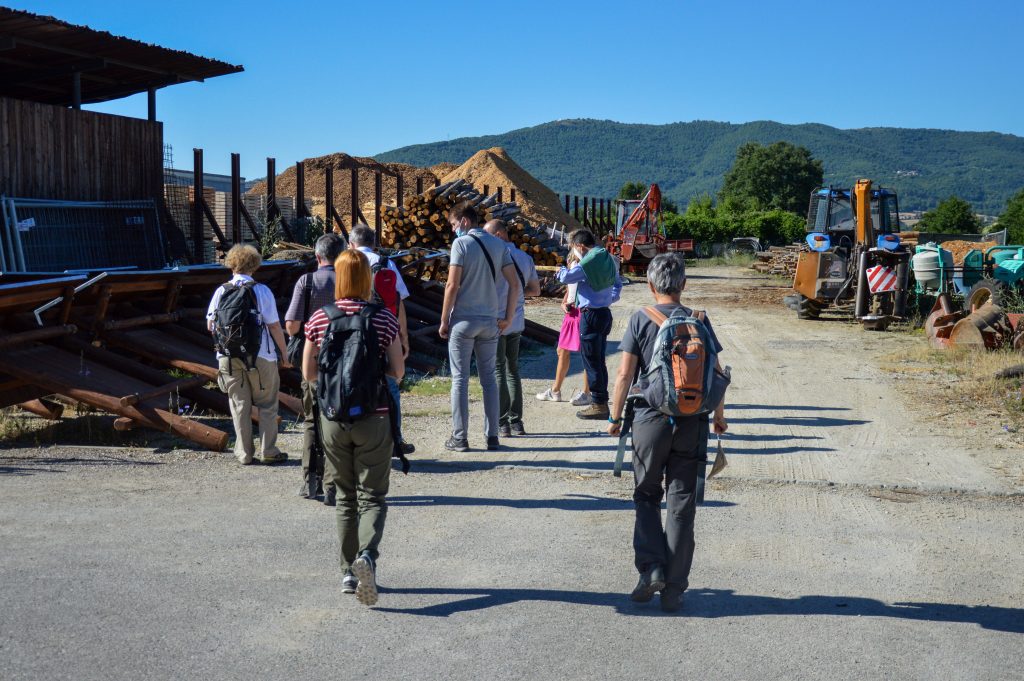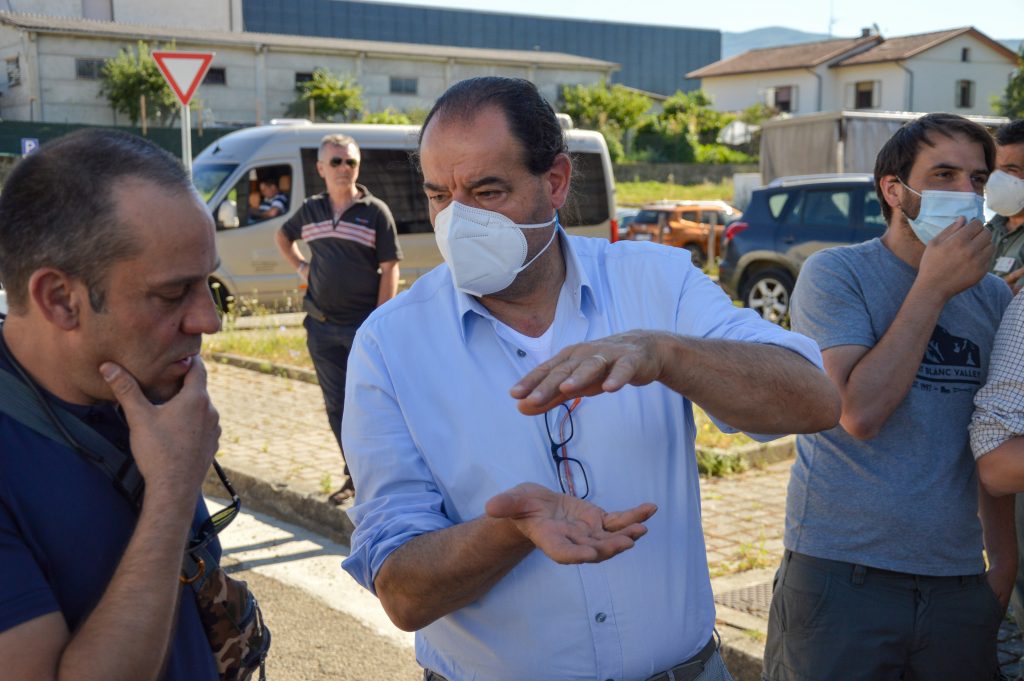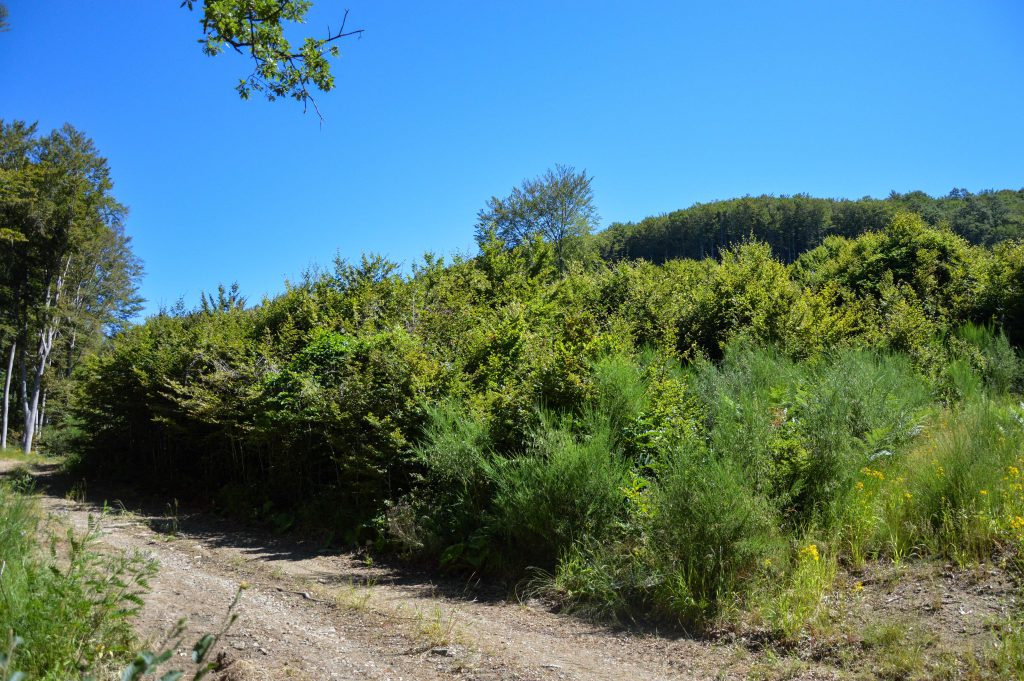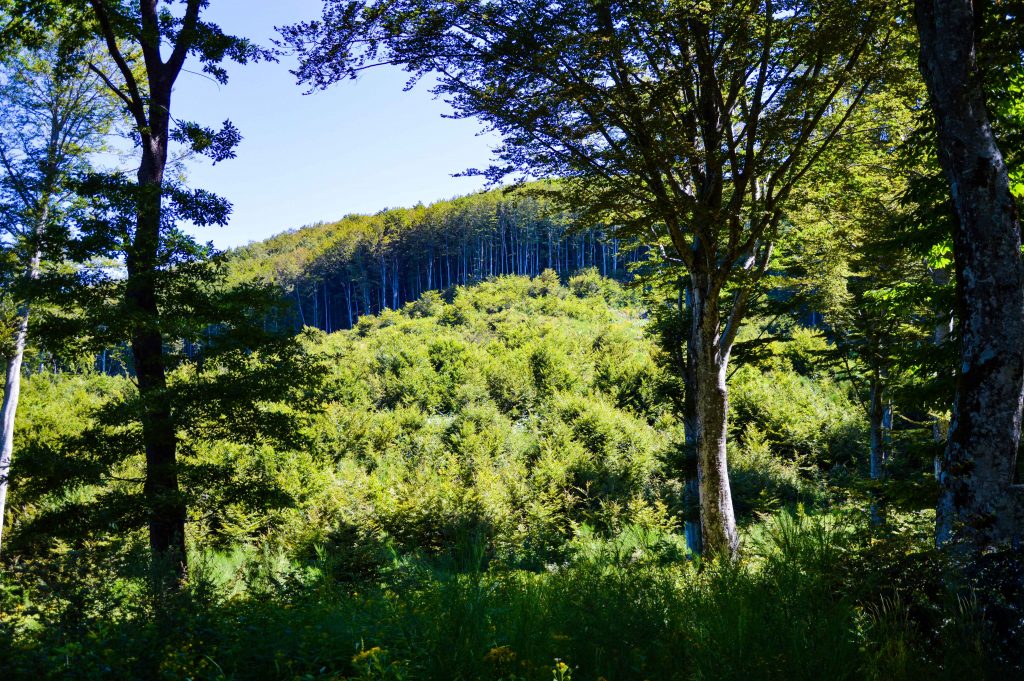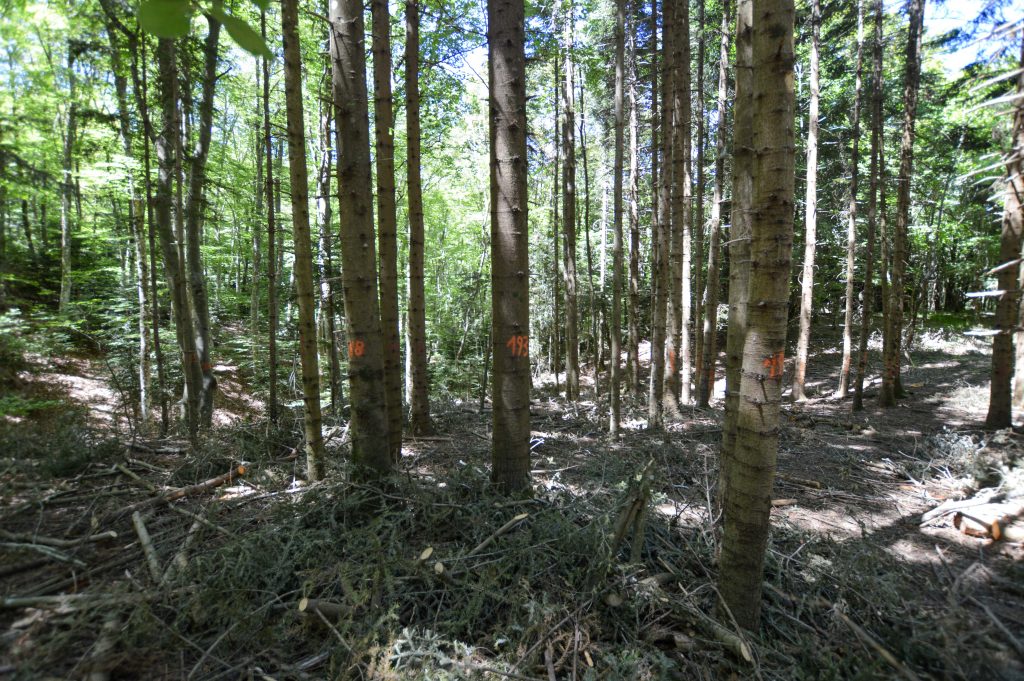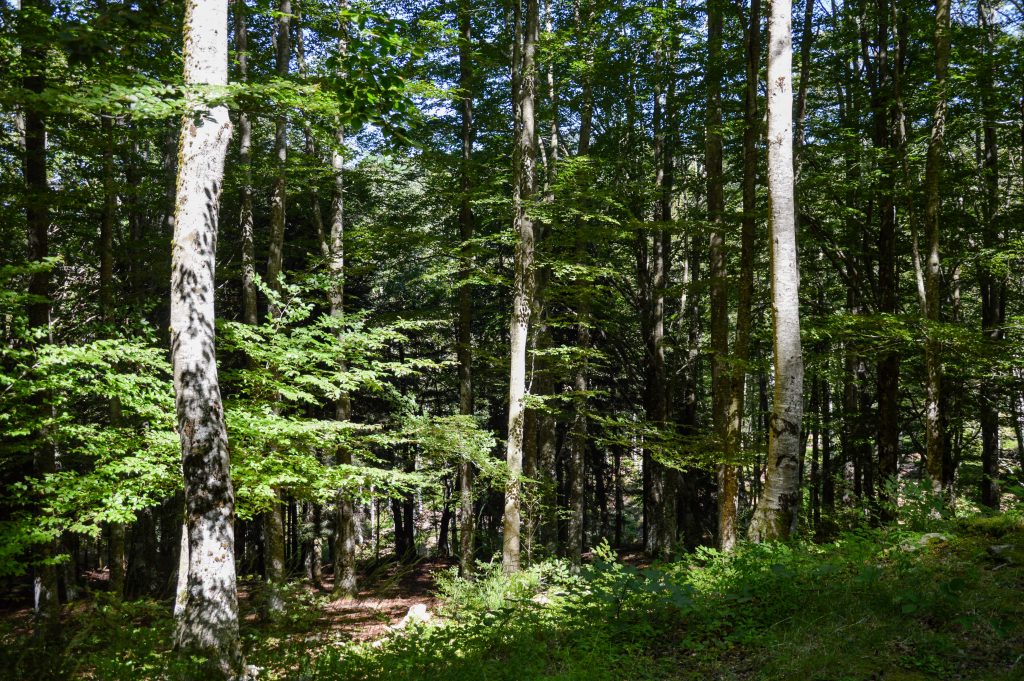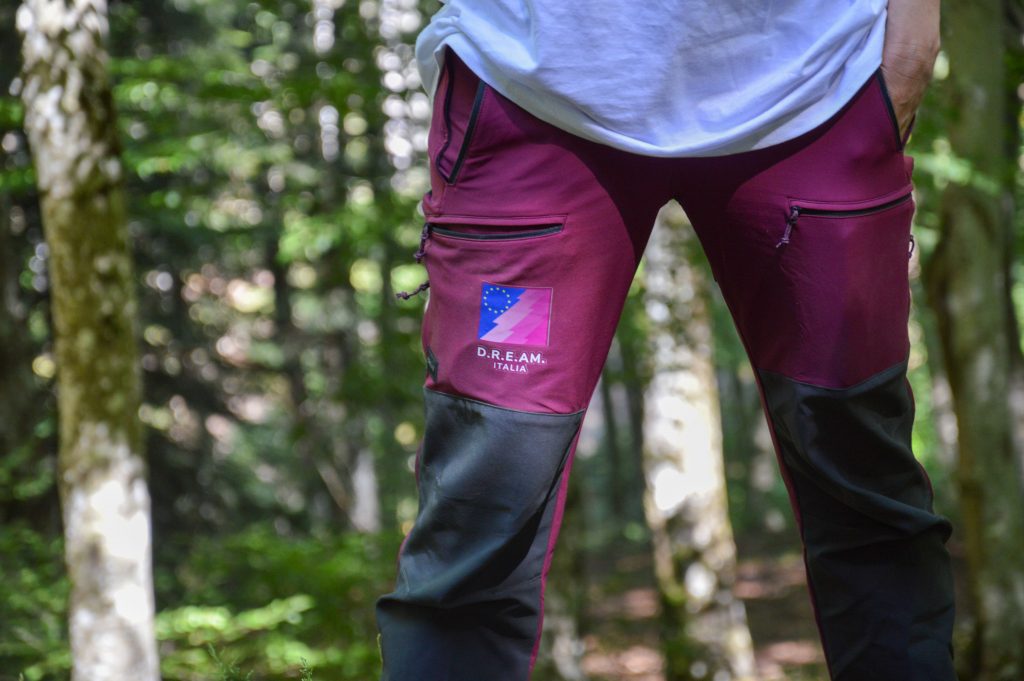Report: LIFE SySTEMiC visits to Italian demonstration sites – 30 June to 6 July 2021
Written and edited by: Boris Rantaša and Davide Travaglini
Contributors: AnDr.ej Breznikar, Tjaša Baloh, AnDr.eja Gregorič, Hojka Kraigher, Donatella Paffetti, Kristina Sever, Cristina Vettori
Photos by: Boris Rantaša
LIFE SySTEMiC project team visits the Italian demonstration sites
The LIFE SySTEMiC project – Close to nature forest management under climate changes – features 30 demonstration sites in Italy, Slovenia and Croatia. At these sites, the project team explored the past and forest management of forests, measured forest parameters and took samples of forest genetic material to be used in laboratory analyses.
The genetic diversity of forest tree populations is the basis for their adaptability and their resilience. The aim of the LIFE SySTEMiC project is to explore the effects of different factors, such as the forest management system, on the genetic diversity of forests. Its central output will be the GenBioSilvi model, which will allow us to take forest genetic diversity into consideration when managing forests.
From the 30th of June to the 6th of July 2021, members of the project team from Italy, Croatia and Slovenia visited the LIFE SySTEMiC demonstration sites in Italy. The aim of this excursion was to visit the demonstration plots in Italy and get to know local forests and their properties. One of the main purposes of these visits were discussions within the project team, which consists of established scientists, forest management and silviculture experts, young researchers, forest related business representatives and others. An important aim was also to present the project to and engage with different groups of local stakeholders, and present the international relevance and scale to the local communities.
Contents – daily reports from the visits
30 June 2021 – Project team meets in Prati di Tivo, Park of Gran Sasso.
2 July 2021 – LIFE SySTEMiC project meeting in Barisciano.
3 July 2021 – Parco San Rossore and the Pinus Pinea demonstration site.
4 July 2021 – Pian degli Ontani and Baldo’s Forest.
5 July 2021 – The monumental forest of La Verna.
6 July 2021 – Final visits to the rich beech forests of Unione di Comuni del Casentino.
30 June 2021 – Project team meets in Prati di Tivo, Park of Gran Sasso
In the late evening of Wednesday, 30 June 2021, the project team met in Prati di Tivo, a village in the Park of Gran Sasso and Monti della Laga. The project members from Croatia (Croatian Forestry Institute) and Slovenia (Slovenian Forestry Institute and Slovenia Forest Service) were met by the project leaders, the University of Florence, and Italian partners (D.R.E.am). The project members were happy to meet each other after the Covid-19 induced separation that lasted over one and a half years.








On the first of July, the month named after Julius Ceasar, who reigned the Roman empire approx. 2000 years ago from the nearby Rome, the project team visited the LIFE SySTEMiC demonstration sites 11 – Venaquaro and 12 – Forte Novello. The visit started in the village / community of Intermesoli, where the local associatiom ASBUC manages the forests, where the demonstration plots are located
The demonstration sites were challenging to reach; the road leading to the starting point of the footpaths could only be traversed by terrain vehicles. From the end of the road, the team had to cross creeks and ascend to the plots through the rocky terrain. The footpath led the team to a plot from the already finished LIFE Fagus project, where coarse woody debris and its impact on forest biodiversity was measured.
Following the trail, the project team, accompanied by Corrado Bellissari, the representative of the community of Intermesoli and president of ASBUC, soon reached the first LIFE Systemic Demonstration site – 11 Venaquaro. The site for European Beech – Fagus Sylvatica L. – has been converted from a coppice forest to a high forest. The forest, which the demonstration site is a part of, is managed by the local community, that conducts minimal forest management – the main forest functions are biodiversity conservation and tourism. The members of the association (approximately 50 people living in the area) share wood products that are harvested from the forest free of charge (except for harvesting costs). Within the LIFE Systemic and other projects, over 60% of trees were genetically sampled.
The project team then ascended to the unmanaged site – LIFE SySTEMiC Demonstration plot 12 – Forte Novello. The data about the site were presented by Dr. Davide Travaglini and Corrado Bellissari. The forests surrounding the site have not been managed for 400 years because of an ongoing conflict between 2 bordering municipalities (Pietracamela and Fano ADr.iano). The growing stock is approx. 1000 cubic meters per hectare. They explained that in 2017, there was a snow avalanche, and a 5 m tall snow cover covered the forest.
In the demonstration sites of Venacquaro and Fonte Novello LIFE SySTEMiC is continuing the studies started in 2000 by the FP4 Dynabeech project. Dr Cristina Vettori provided information on Dynabeech project and the relationships with LIFE SySTEMiC project.




The visit continued with fruitful discussions between forestry experts, project partners and the representatives of local communities, and national forest services (Carabinieri Forestale, Slovenia Forest Service and Hrvatske Šume). After completing the hike down to the starting point, the project team transferred to Barisciano (L’Aquila), when they finished the day.




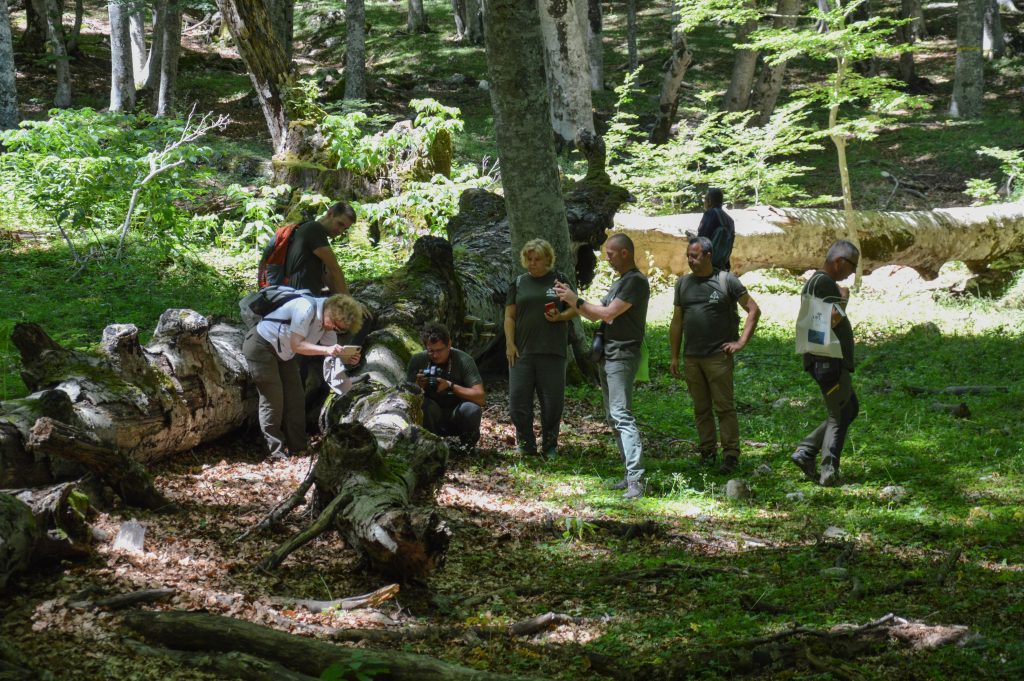

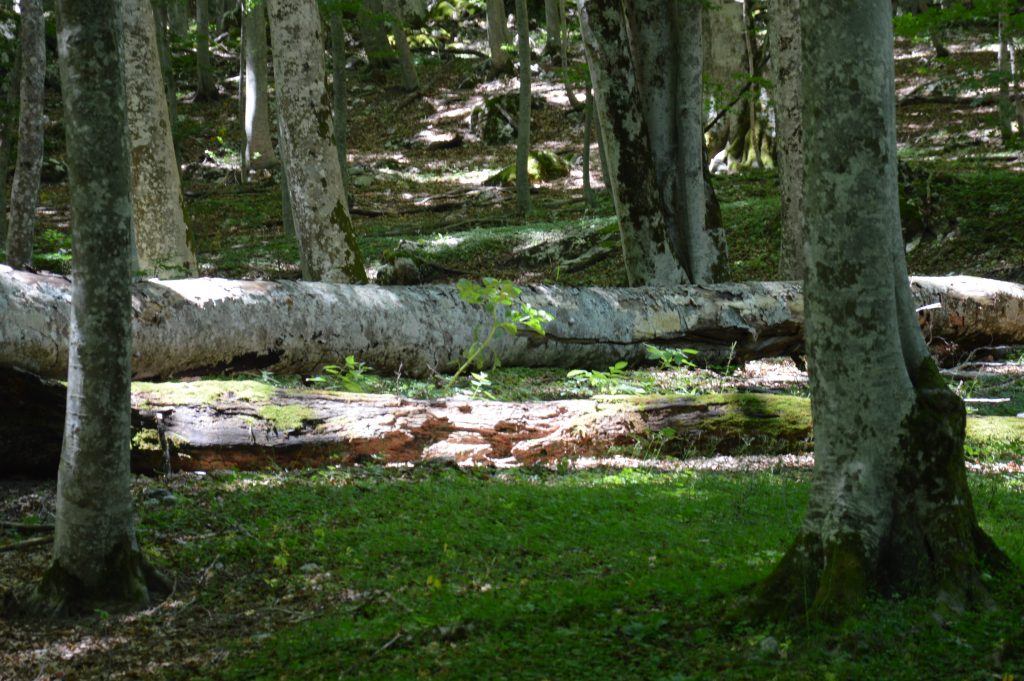



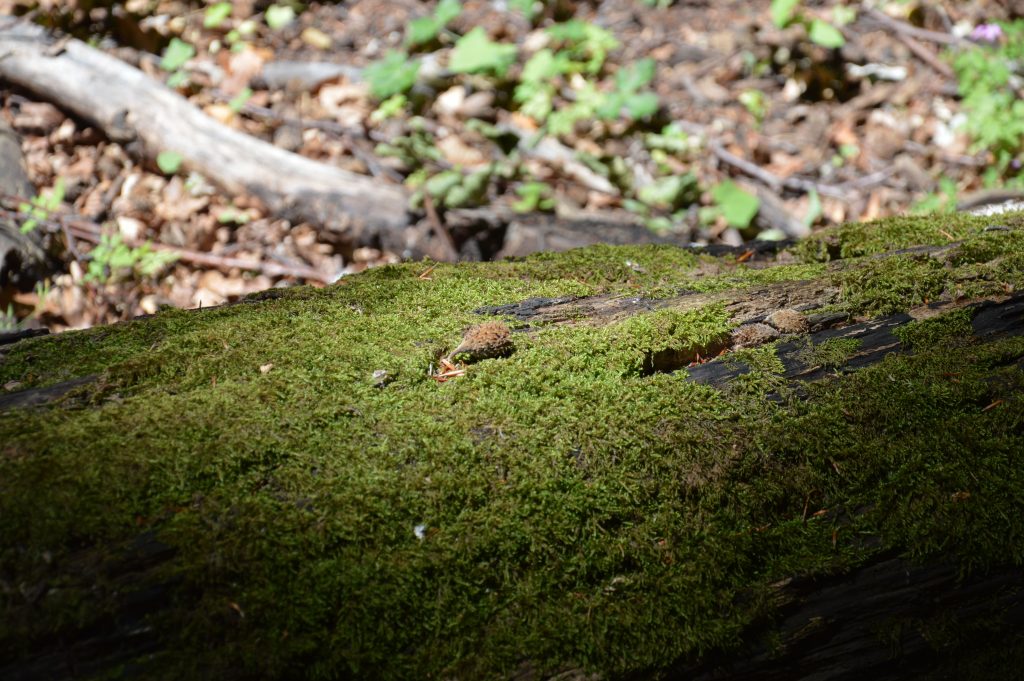





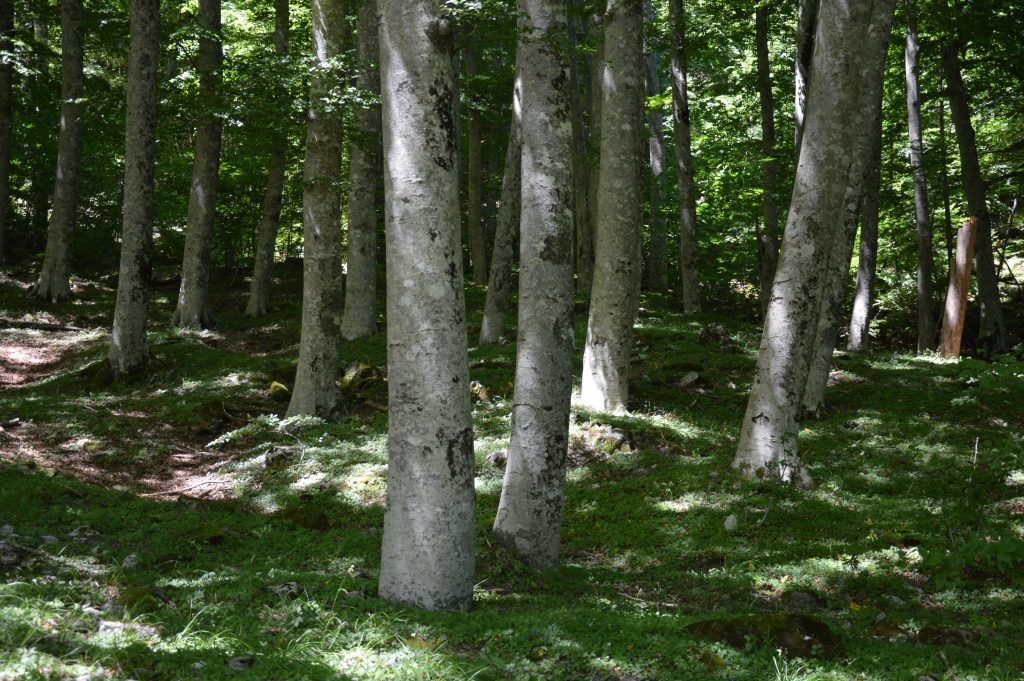



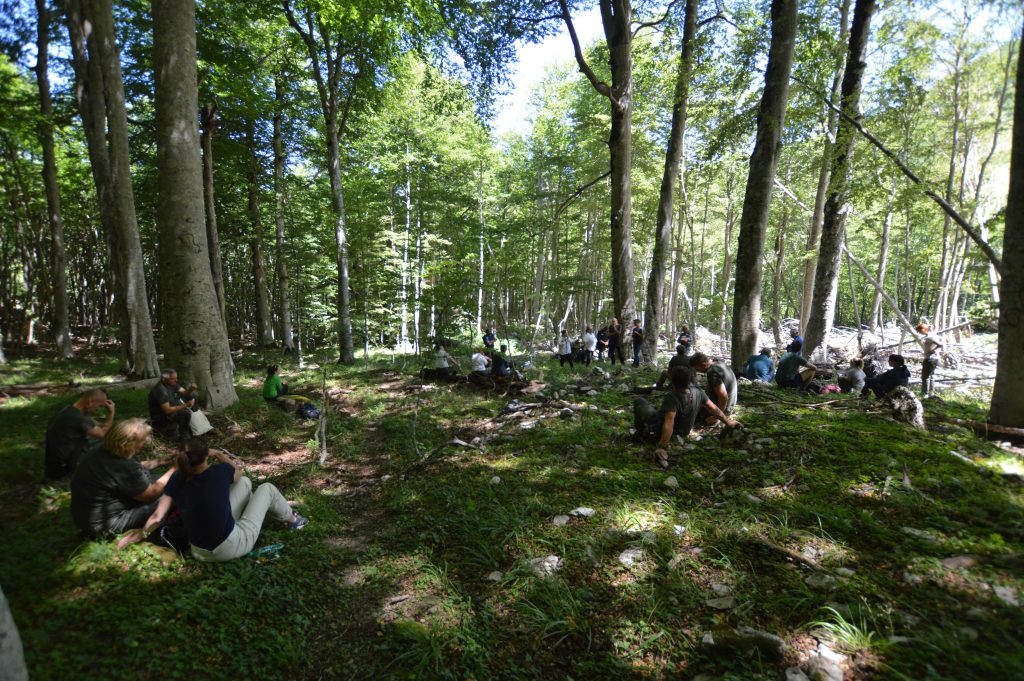

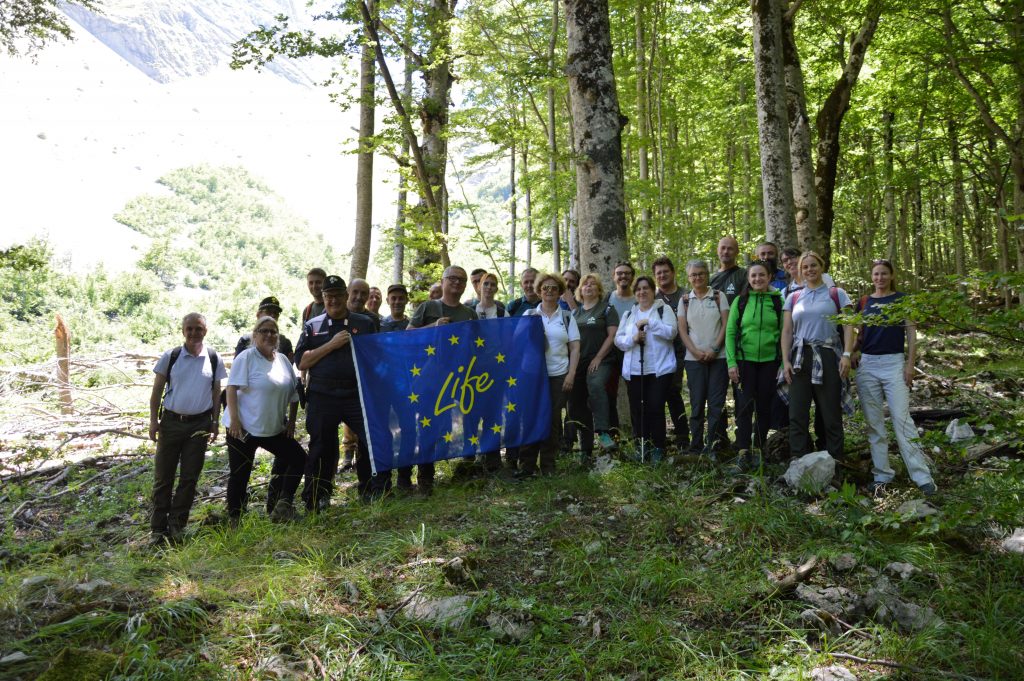

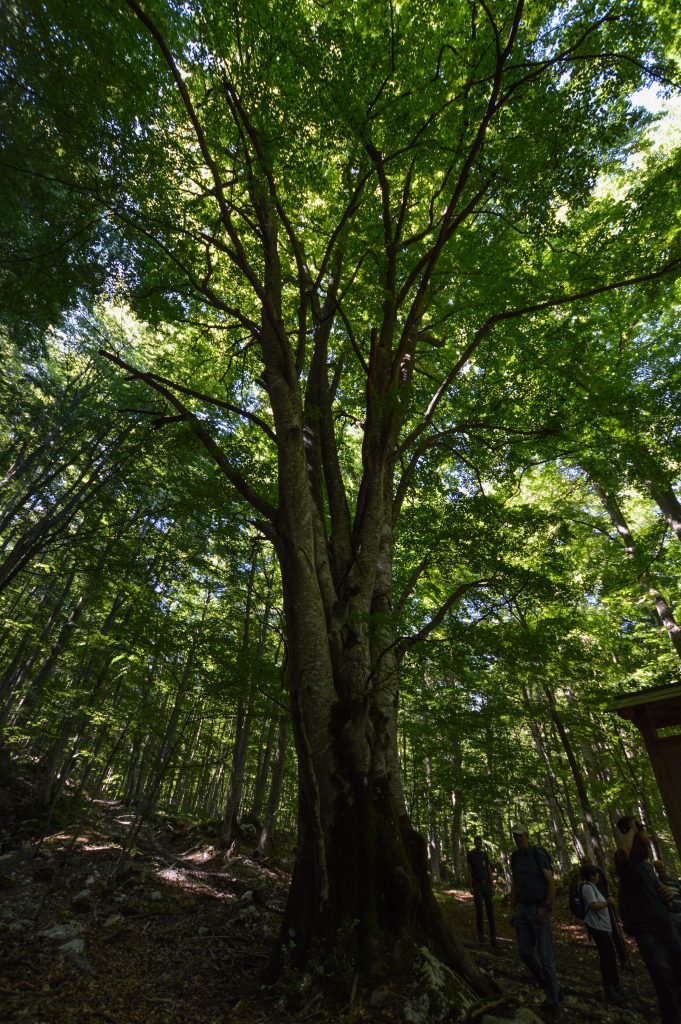

2 July 2021 – LIFE SySTEMiC project meeting in Barisciano.
On the second day of the trip, the LIFE SySTEMiC team woke up in the area of Barisciano (province of L’Aquila), which is famous for its stunning landscape and agriculture, especially growing local variations of lentil crops. It is also the home of an abundant population of wild boar.
The project team held an Executive Committee project meeting, where the status of the project was analyzed. The project manager, Dr. Cristina Vettori, chaired the meeting together with project coordinator Prof.. Donatella Paffetti. Together with all project partner leaders and action responsibles, they set the course of the project for the coming period.
In the afternoon, the project team moved approximately 200 km away to Pisa, where they prepared for the visit of the Parco San Rossore.












In the morning, the team came to Parco di San Rossore, which is located in the vicinity of the city of Pisa. The park is an area of biodiversity conservation and recreation, spanning over 23.000 km2 of land area, and also 30 km of coast. It is located between two rivers, one of which is the Arno, and has been in the past the property of the king, the state, and now of the Tuscany Region. The park management is a LIFE SySTEMiC project partner institution, represented by Dr. Francesca Logli.
The activities of the day became with a workshop for stakeholders, where Francesca Logli, Prof. Donatella Paffetti and Prof. Davide Travaglini presented the LIFE SySTEMiC project and its activities to the project stakeholders. They explained the relevance of the project to the Parco di San Rossore, which lies especially in protecting genetic diversity in the park. The stakeholders and the project team then visited the LIFE SySTEMiC demonstration site in the heart of the park.
When arriving at the demonstration site, the air was filled with the smell of pine and the rustling of crickets. The participants were surrounded by the tall trees and large canopies of an approx. 100 years old Pinus pinea forest. Prof. Davide Travaglini explained that most of the trees in the stand have reached their harvest age. In Italy, pine stands are usually regenerated artificially (by sowing seed), but they are going to demonstrate a study close to nature forest management in Pinus pinea stands within the LIFE Systemic project. This means that new silvicultural techniques are going to be used, especially the seed cut and group selection forest management system, where smaller areas are cut instead of the whole forest strand, allowing natural regeneration develop. The project partners from Slovenia and Croatia gave input and recommendations on this close to nature forest management approach, and the closing discussion presented a platform for the sharing of knowledge and experience. The forest manager will have to be especially careful of local and alien species that could appear in the undergrowth – Ailanthus altissima and the robinia tree (Robinia pseudoacacia). In the afternoon, the team moved to Abetone, where the next demonstration plots for beech are located.










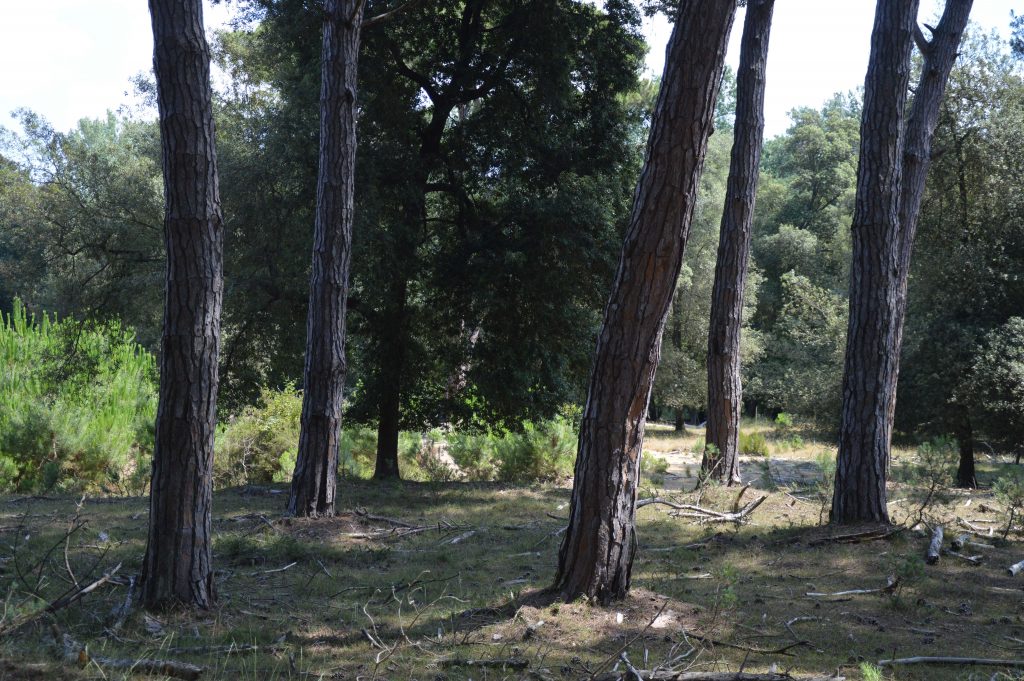

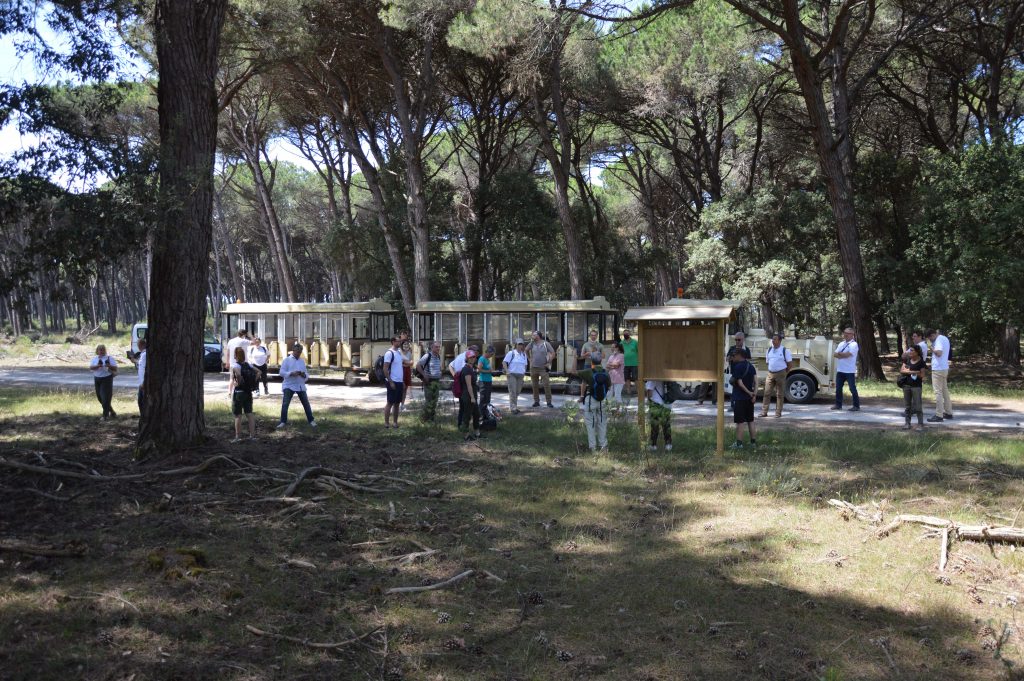





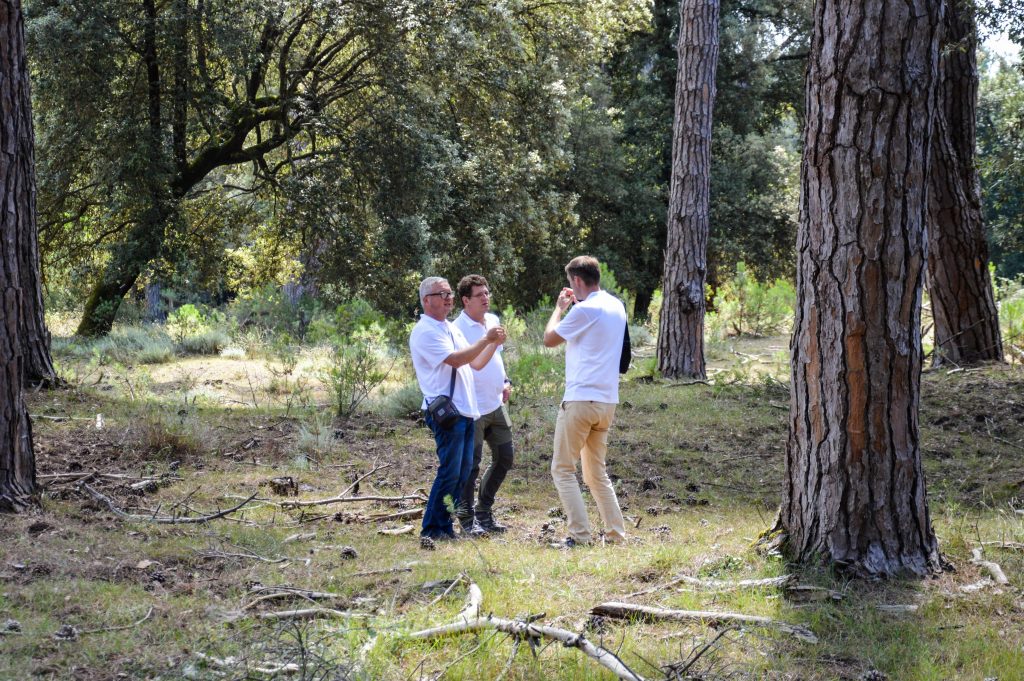









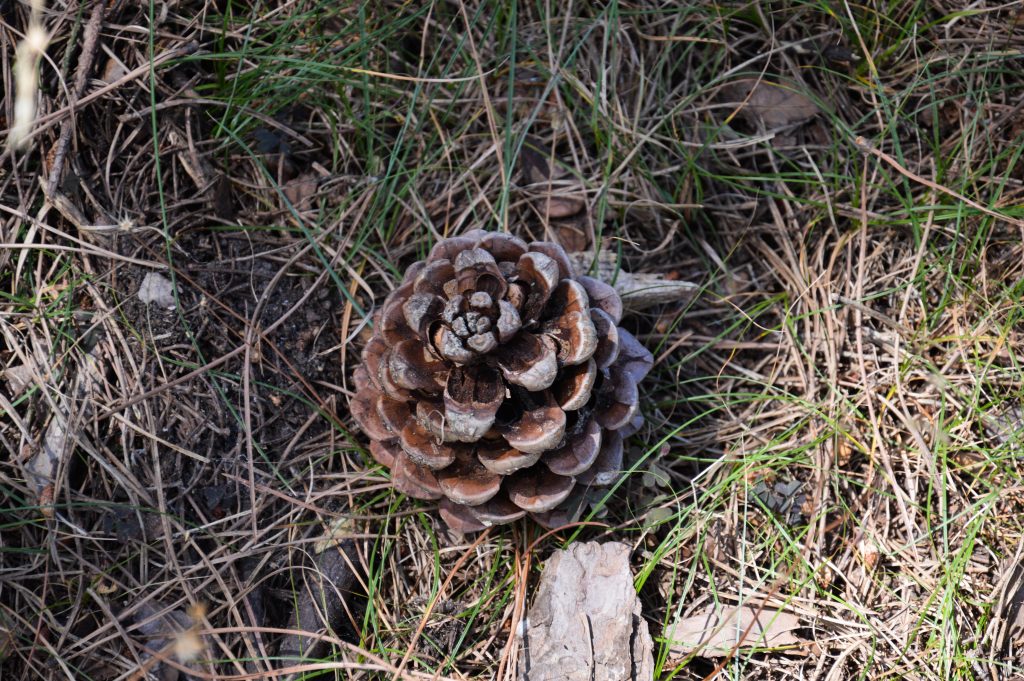





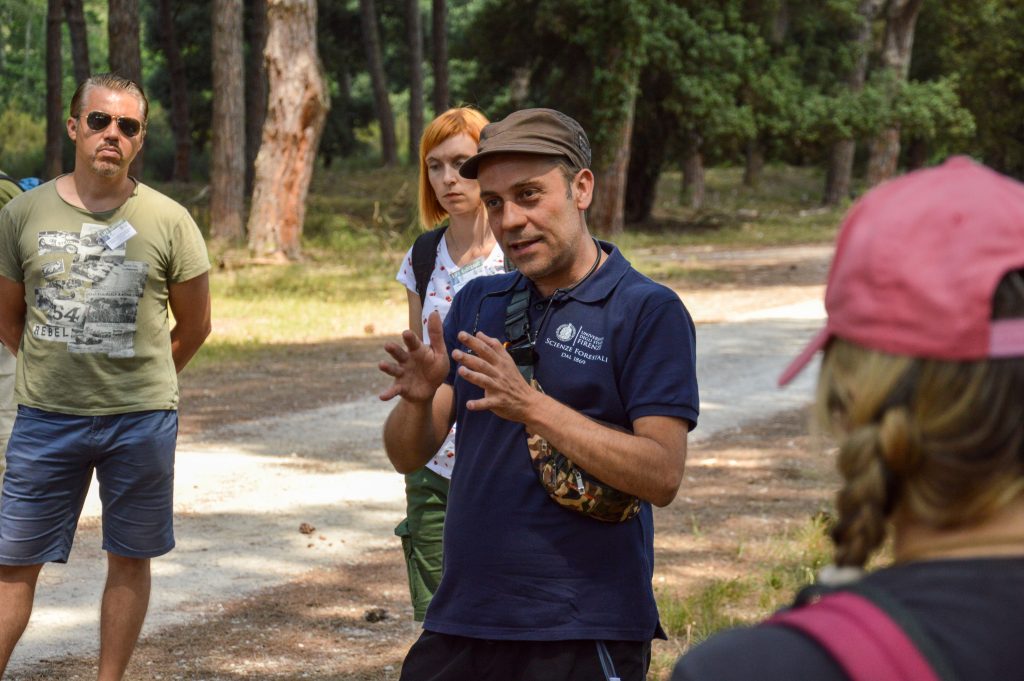













4 July 2021 – Pian degli Ontani and Baldo’s Forest
On day 4 of the LIFE SySTEMiC excursion, the project team started the day in the village of Pian di Novello (Abetone) and made their way to the local forest information centre, which is led by the Raggruppamento Carabinieri Forestale. There, they were received by Tenente Colonnello Daniela Scopigno and representatives of the Carabinieri Forestale. In the information centre, Daniela Scopigno presented the local biogenetic reserves Abetone, Pian degli Ontani, Campolino, and Acquerino. The project members found out about their properties, history, and current management – these are Natura 2000 sites.
After the presentation information centre, the LIFE SySTEMiC team entered some of the most productive beech forests in Tuscany. These forests have very strong growth, and served as production forests in the past. They were especially important for providing energy for iron production in the past. Now, they are nature reserves that are also a part of the Natura 2000 nature protection network. The Pian degli Ontani is an European beech (Fagus sylvatica) forest reserve, that spans over 519 ha of area. 95% of these forests are composed by beech, but Silver fir (Abies alba) trees also grow here, and can reach large dimensions. This forest was managed as a coppice forest in the past, but has been converted to a high forest and managed with the shelterwood system. In the winter of 2021, the forest reserved suffered some snow damage. The park management now has to perform maintenance cuttings, since this is a nature reserve.
Then, the team hiked to the other LIFE SySTEMiC demonstration plot in the area – Baldo’s forest. This privately owned forest is located just outside of the nature reserve. It is actively managed via a single tree selection system (uneven aged forest) by the local family as an uneven aged forest stand. They mostly use the felled timber for firewood, and the trees that have an exceptional quality are used for veneer. The project team discussed here the economical impacts and viability of close to nature management. They agreed that this is the correct way to manage forest, especially when considering climatic changes in the forest. In the end, Dr. Cristina Vettori explained the use and relevance of adaptive genetic markers to the project and close to nature forest management.
The team then moved to Poppi (Arezzo), where they prepared for the next day’s visit of the Monumental forest of La Verna.




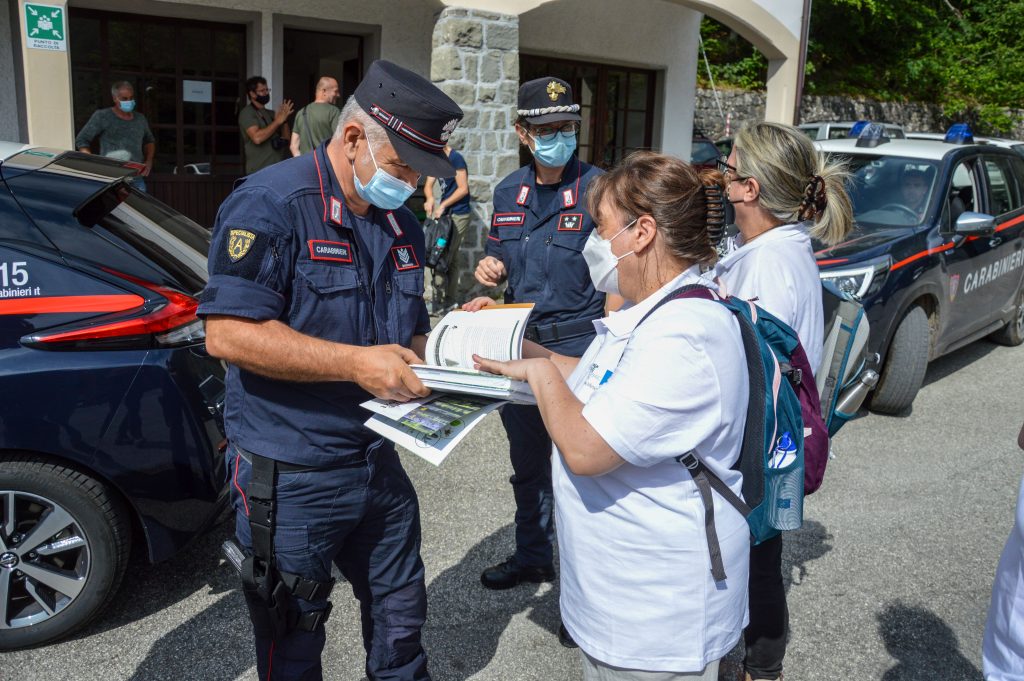





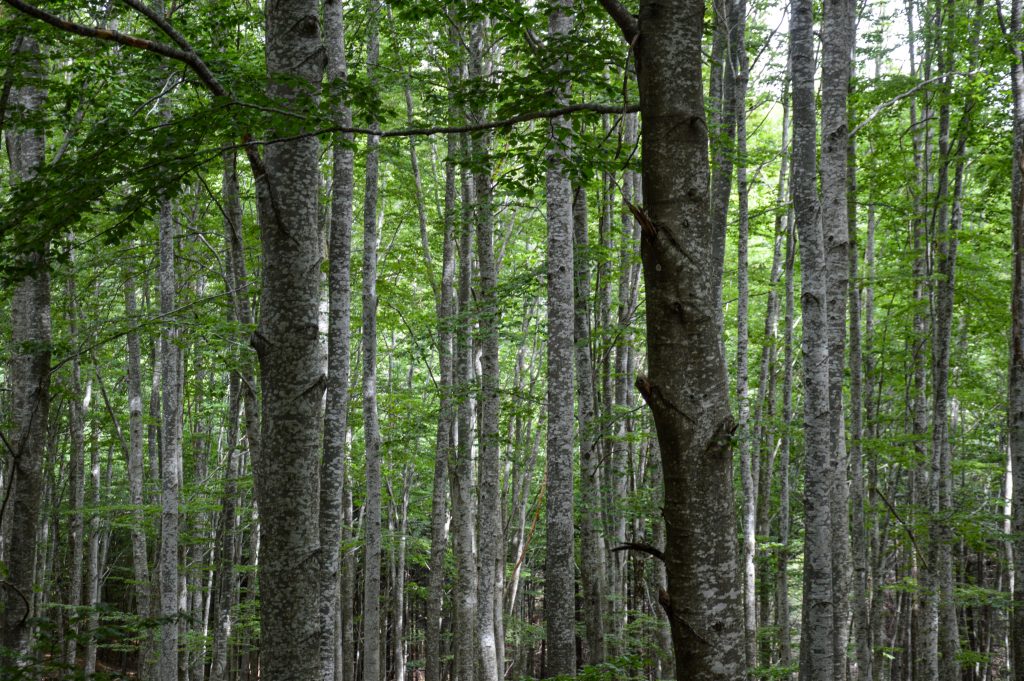





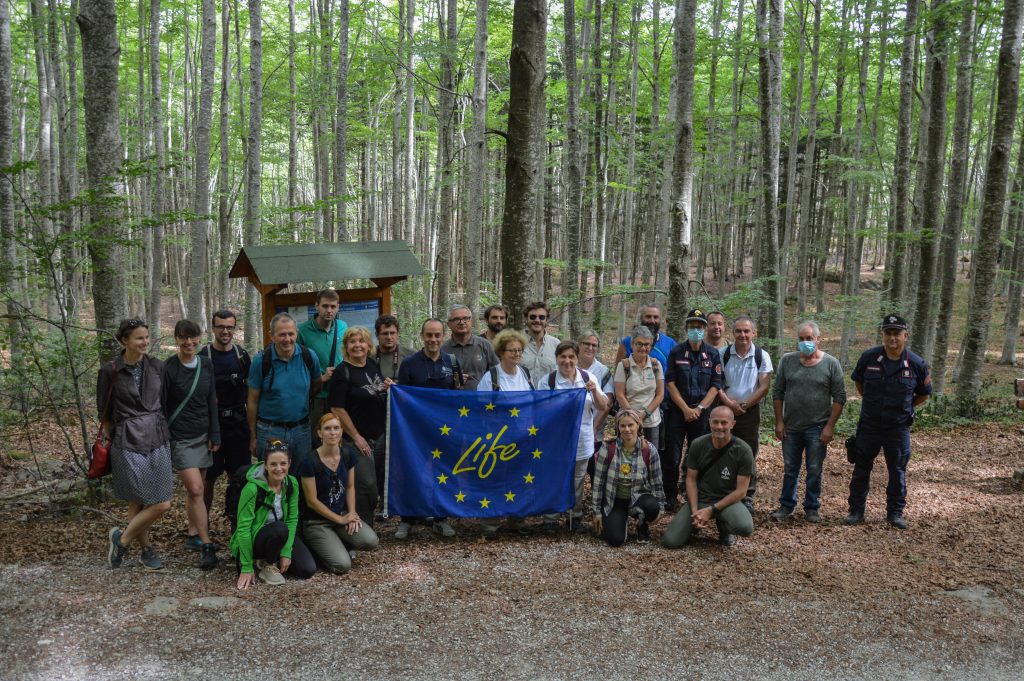

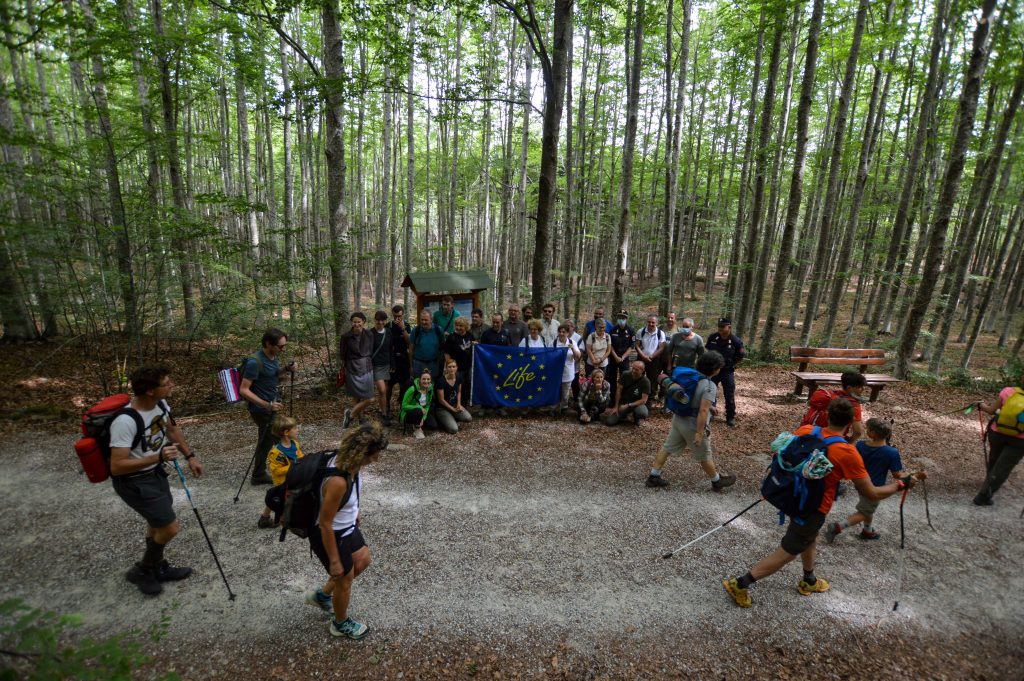











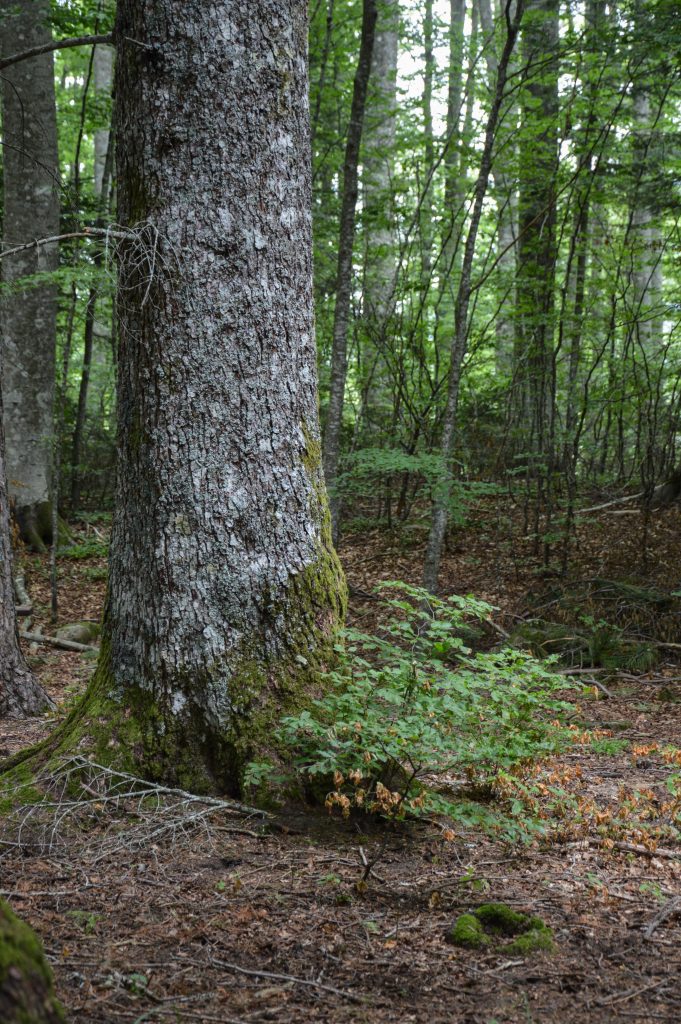











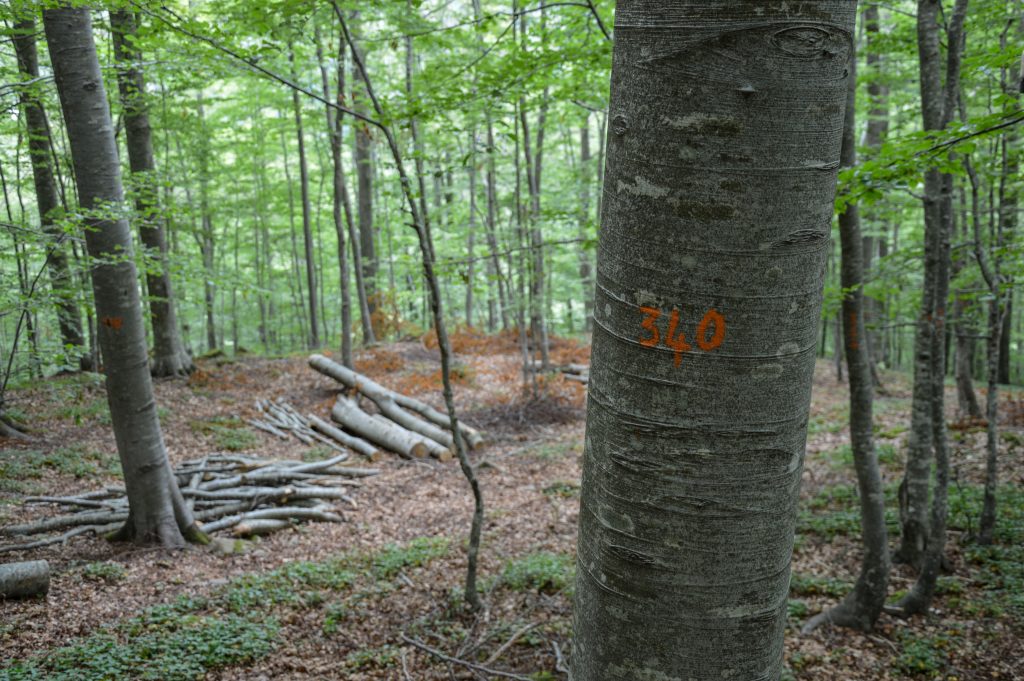

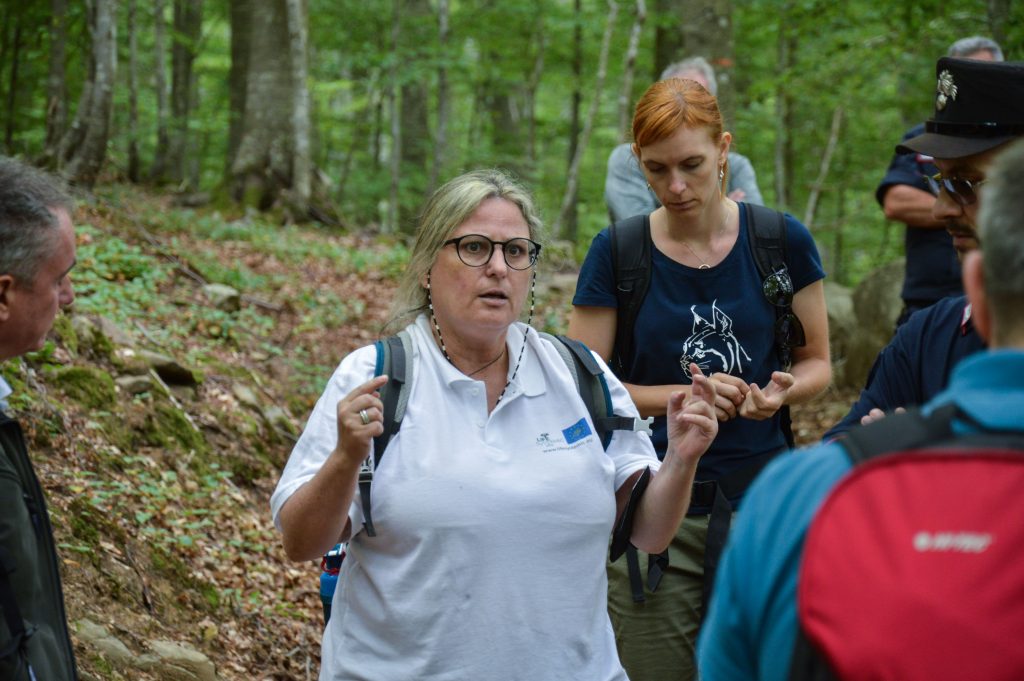



5 July 2021 – The monumental forest of La Verna
On July 5 an Educational visit was carried out in the monumental forest of La Verna, which host a demonstration site of the LIFE SySTEMiC project. The monumental forest is part of the National Park of Foreste Casentinesi, Monte Falterona and Campigna. More than 30 persons participated to the event.
The activities of the day became with a workshop carried out in the Conference room of the La Verna Sanctuary. The workshop was opened by friar Padre Guardiano Francesco Brasa, Dr. Andrea Gennai (National Park of Foreste Casentinesi), and Dr. Eleonora Ducci (President of the Unioni di Comuni Montani del Casentino), which welcomed the participants. The main objectives of the LIFE SySTEMiC project were presented by Prof. Donatella Paffetti, the project coordinator.
After the workshop, the participants visited the monumental forest of La Verna, walking from the Sanctuary up to the top of Mount Penna, guided by Fabio Ciabatti and his colleagues of the Unione dei Comuni Montani del Casentino. The monumental forest is an uneven-aged old-growth forest dominated by silver fir, beech, and other broadleaved species, like Scots elm and sycamore. The forest is rich in biodiversity, with large and very old trees, and dead trees on the ground, which provide important microhabitats for many plants and animal species.
During the field trip the participants visited the demonstration site of the LIFE SySTEMiC project. Here the activities of the project were presented by Dr. Cristina Vettori, Prof. Davide Travaglini e and Dr. Francesco Parisi. In addition, the participants visited the tallest Italian silver fir (51.85 m), which has been recently discovered in the forest of La Verna by Giant Trees Foundation Onlus thanks to the report of friar Valerio.
The Educational visit ended in the La Verna Sanctuary with a lunch that was generously provided to all participants by the Unione dei Comuni Montani del Casentino.
In the afternoon, the team of the LIFE SySTEMiC project and the remaining participants had the special occasion to visit the Sanctuary guided by Padre Guardiano Francesco Brasa. The Sanctuary cherishes several art, culture and history treasures inside its massive and articulated structure. It was a great occasion to get information on St. Francis and his lifestyle, the stigmata episode, and activities carried out for centuries at La Verna by friars. We wish to thanks Padre Guardiano for this very special experience.






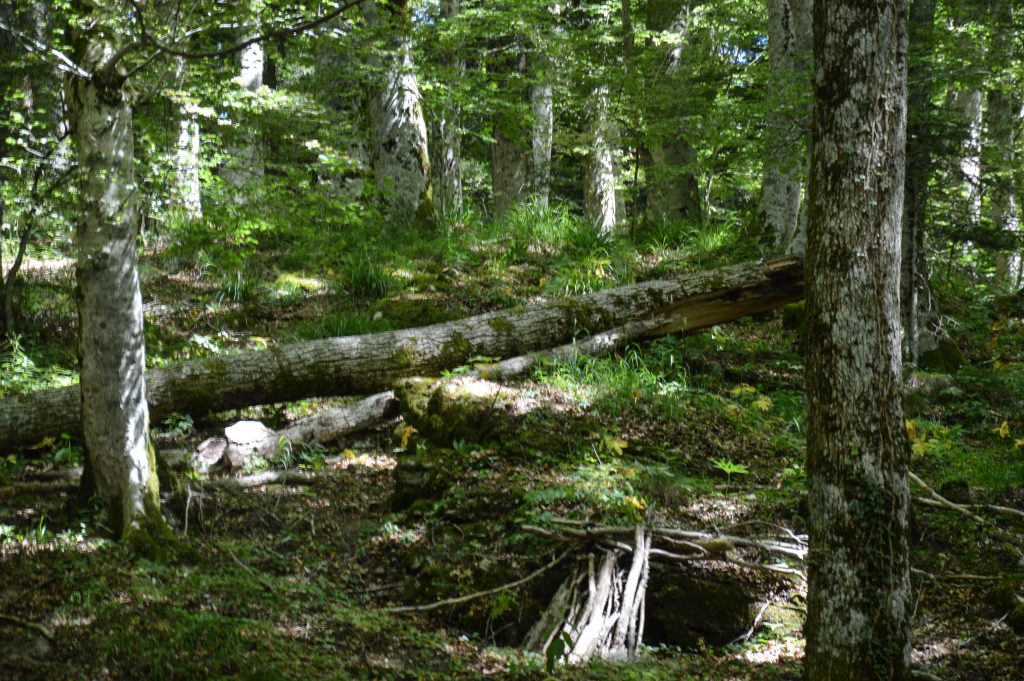



































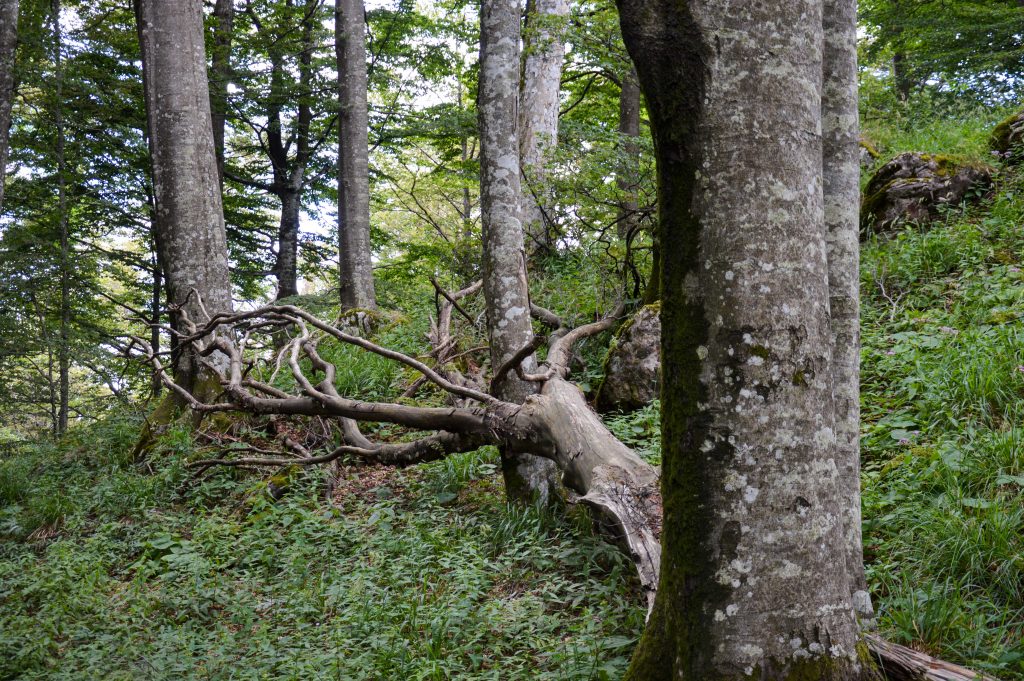

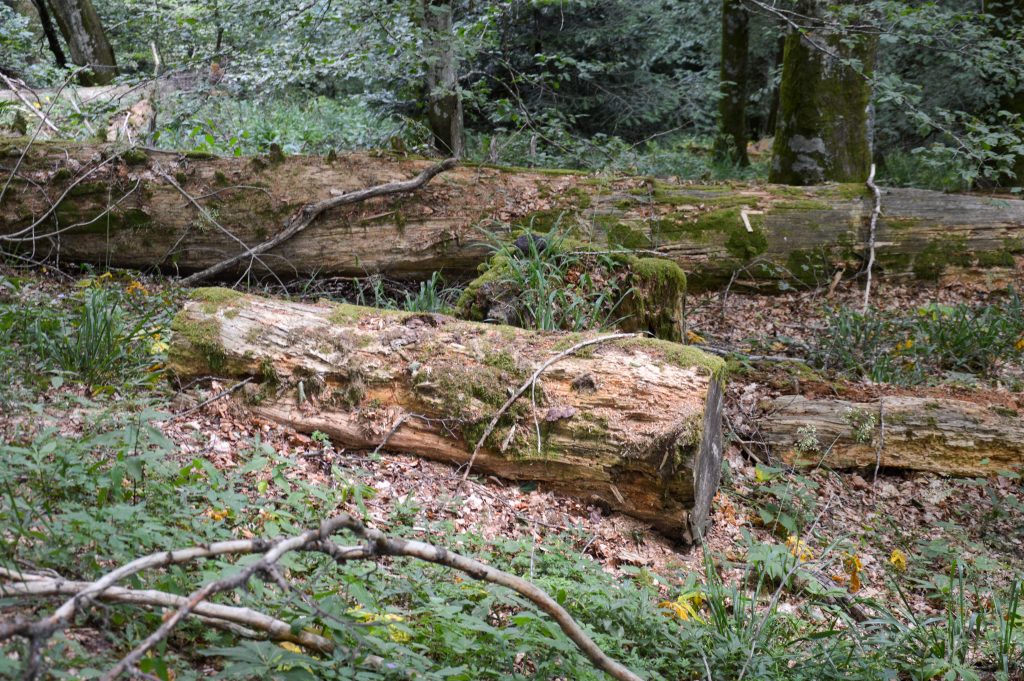

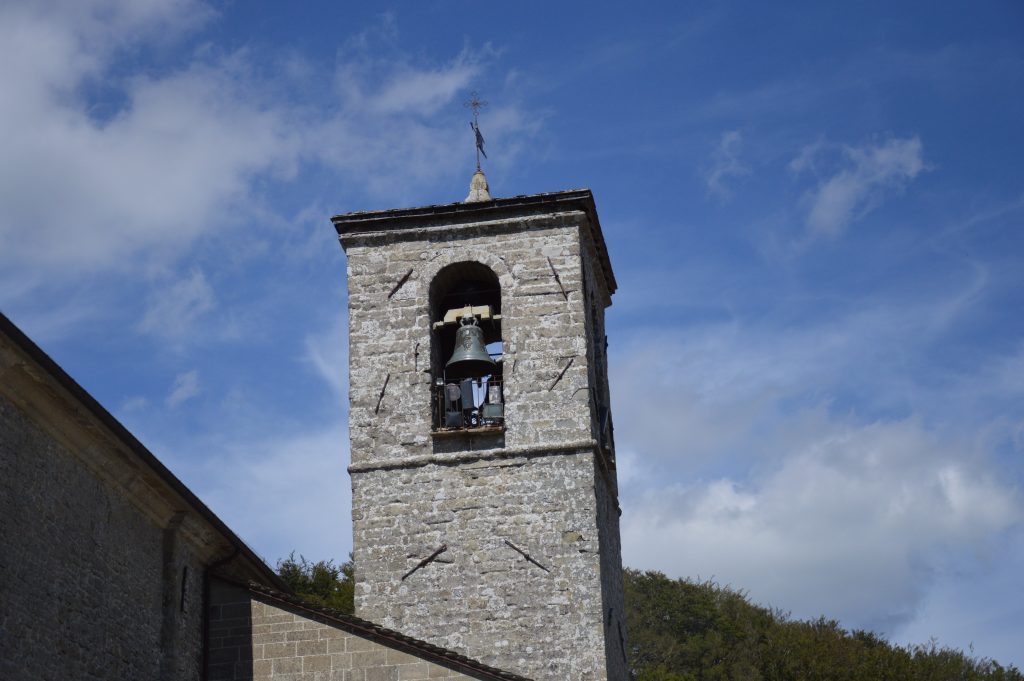

6 July 2021 – Final visits to the rich beech forests of Unione di Comuni del Casentino
The LIFE SySTEMiC project team started the last day with a visit of headquarters of Unione di Comuni del Casentino (Union of Local Community of Casentino) and their workshop. It is a regional company, which produces equipment for public forests and natural reserves in the region (e.g. wooden park furniture, notice boards, etc.). The technician of forestry department Mr. Fabio Ciabatti presented the premises, as well as the premises and equipment of civil protection service headquarters, which is also located in the building. Next to the headquarters of Unione di Comuni del Casentino is a private wood production company, which produces a range of wooden products (e.g. wood chips, packaging, pallets, ect.), mostly from the wood of conifers (silver fir, Douglas fir, pine and larch).
The team’s next stop was the forest district of Alpe di Catenaia where project team visited 4 state-owned demonstration sites managed by the Unione di Comuni del Casentino.
Demonstration sites n. 4 Casella 1 and 5 Casella 2 are even-aged beech stand managed by an uniform shelterwood forest management system. On the demonstration site Casella 1, a seed and removal harvest took place in 2002 and 2018. Today, there is a dense regeneration of European beech. The structure of the young stand is dense and one-layered. Casella 2 is a mature, even-aged beech stand. Regeneration has been introduced with a seed cut in 2017. The forest management planner presented their plans for next 15 years to the participants. The participants discussed about silviculture measures and how they are subsidized.
Demonstration site n. 6 Faltelli and n. 7 Tre Termini are a managed silver fir stands of natural origin. Faltelli stand is a very dense pole stand (25 years old) which hasn’t been thinned until recently. The first thinning was done in this year with intensity of 35% of growing stock. Here, the goal is to diversify the species structure of the forest stand and therefore preserve minority tree species. The Tre Termini LIFE SySTEMiC demonstration plot is located in an even-aged stand of silver fir, European beech and Turkey oak. A selection cut was taking place at the time of the project teams’s visit. The wood will be used mainly as a firewood.
For the visit of the last demonstration site, the project team moved from Alpe di Catenai across the valley of the Arno river to the forest district of Pratomagno. After a light lunch under the trees, generously provided by the Unione di Comuni del Casentino, the project team discussed the management of the demonstration site n. 3 Pian dei Ciliegi. In this European beech stand, a selection cut was carried out in April 2021 in order to analyze the influence of forest management on genetic diversity of the stand.
The visit of Pratomagno forest district concluded the project team’s 7 day trip through the Apennine mountains and Tuscany. In the end, the team said goodbye to each other, thankful for all the useful knowledge and experiences that were gained along the way.
